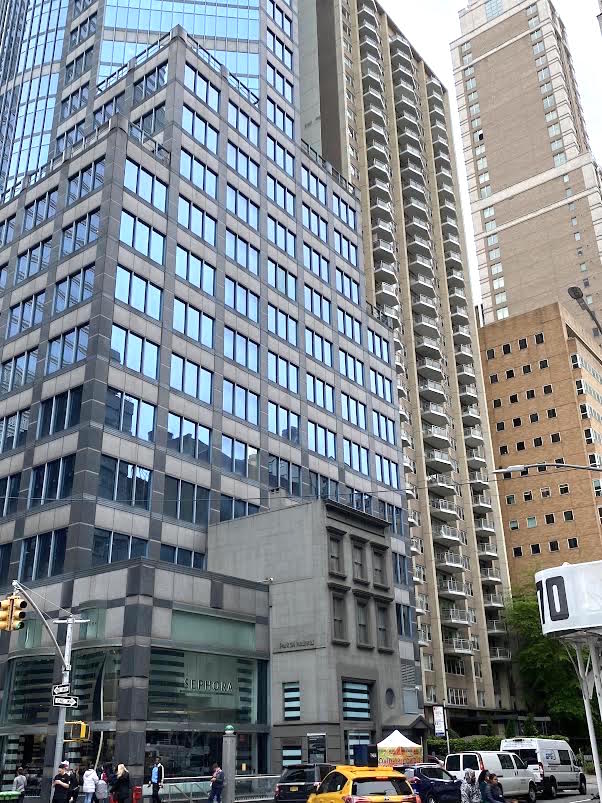These days, the traffic-packed intersection at Lexington Avenue and 60th Street is a modern tower mecca of street-level retail shops topped by floor after floor of office space and luxury residences.
But steps away from this busy urban crossroads is a curious anachronism: a four-story brownstone. Number 134 East 60th Street has been stripped of its entrance and 19th century detailing. It sits forlorn, dark, and boxy, attached to the 31-story tower behind it and to a Sephora next door.
There’s no longer a door or first and second floor windows, so it’s unlikely anyone lives in this walkup, which used to be part of a pretty block of brownstones built in 1865. So how did it escape demolition—and why is it still here?

Think of it as a brick and mortar memorial to a woman named Jean Herman, who almost 40 years ago refused to cede her small apartment on the fourth floor to the developers of the tower.
The story begins in the early 1980s. Herman was a freelance public relations specialist who had a longtime rent-stabilized lease of $168 per month for her two-room apartment here, according to the New York Times. She liked living in the neighborhood, she told the Times in another article, and she decorated her small home with window boxes of petunias and geraniums, per an AP story.
Then in 1981, a real-estate development company called Cohen Brothers “bought her building and every other on Lexington Avenue between 59th and 60th Street, across from Bloomingdale’s department store, with plans to demolish them all,” stated the AP piece.
Other tenants were evicted or bought out. Herman stayed put, and because her apartment was rent stabilized, she couldn’t be forced to leave. So the developers “offered to find her another apartment and work out an arrangement in which they would pay her rent, plus a stipend,” wrote the Times.
Herman was shown 25 apartments in the general neighborhood, but none of them worked for her because they were not rent-stabilized. She told the Times, “if I move this time, I don’t intend to do it again.” Reports came out that she was offered six figures, even a million dollars to give up her home, but Herman insisted these numbers weren’t accurate.
By 1986, Herman was the only tenant left in her brownstone. After exhausting all avenues for getting her out of the building, the developers gave up and begin construction on the tower. When it was completed, the tower opened with Herman still living in the brownstone.
Herman didn’t occupy her apartment for much longer; she died of cancer in 1992. “Her vacancy last month came too late for the Cohens, who remain bitter over what they regard as Miss Herman’s utter folly,” the AP article stated.
To many New Yorkers, however, Herman is something of a heroine, unafraid to stand up to developers and defend herself under the threat of losing the home she was happy with. Her holdout brownstone makes a very appropriate monument.
[Third image: New-York Historical Society; fourth image: Tom Monaster/New York Daily News March 23, 1986]














